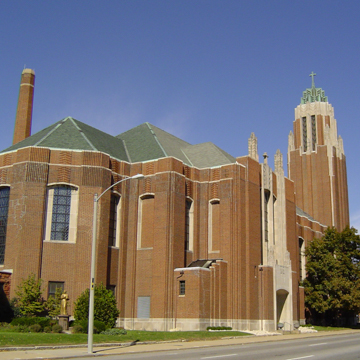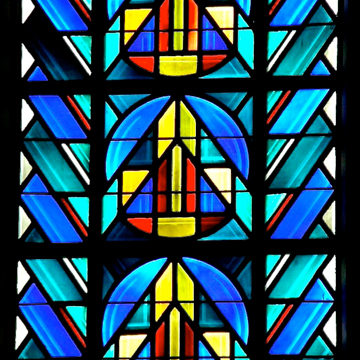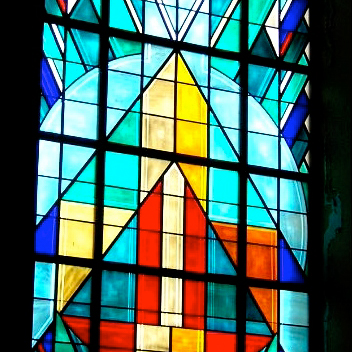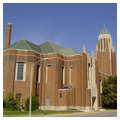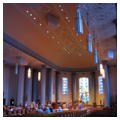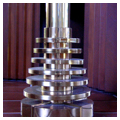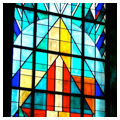Holy Trinity Church is one of the state’s best examples of a Modern Gothic religious building, notable for its spectacular Art Deco stained glass windows and plaster ornament and for its 138-foot-tall tower—a visual landmark in the central Illinois city of Bloomington.
The brick-clad structure replaced an earlier church that had been destroyed by fire. Using insurance proceeds, the largely Irish immigrant congregation was able to build a new church in the midst of the Great Depression. The congregation hired local architect Arthur F. Moratz to design a reinforced concrete structure that partially utilized the foundations of the previous church.
The church’s location at a major intersection (U.S. 51 and U.S. 150) and on a slight hill at the north side of the downtown heightens the impact of the soaring corner tower, which is set next to the main entrance. The tower’s modernist form and Art Deco pinnacles and details reflect elements of earlier building designs such as Eliel Saarinen’s 1922 entry in the Chicago Tribune Tower competition, the Bullock’s Wilshire Department Store in Los Angeles (1928, John and Donald Parkinson), and the Boston Avenue Methodist Church in Tulsa, Oklahoma (1929, Bruce Goff).
Holy Trinity’s 91 x 202-foot floor plan is an elongated, column-free, cruciform shape. The interior features marble dado walls, tile floors, and a barrel vault-shaped decorative plaster ceiling suspended from steel roof trusses. The most dramatic interior feature is the dozen-plus stained glass windows, which were designed by the Emil Frei Stained Glass Company of St. Louis in collaboration with Moratz. The dominant color of the windows is blue, with accents of red, yellow, and white, and they are executed in abstracted forms of chevrons, pyramids, and zig-zag shapes.
While the modernist windows provoked local complaints because of their lack of traditional figural forms, they were praised by stained glass experts. One contemporary critic described the windows as “some of the most advanced and experimental work being done in the country.”
References
Koos, Greg, “Holy Trinity Church, Rectory, and Convent,” McLean County, Illinois. National Register of Historic Places Inventory–Nomination Form, 1983. National Park Service, U.S. Department of the Interior, Washington, D.C.
Moore, Rev. S. N. History of Holy Trinity Parish. Bloomington, IL: Holy Trinity Roman Catholic Parish, 1952.
Powers, R.E. “The Emil Frei Stained Glass Company.” Built St. Louis .Accessed September 13, 2017. http://www.builtstlouis.net/.
Straka, Carol. Paul O. Moratz Collection. Bloomington, IL: McLean County Museum of History, 2009.





















